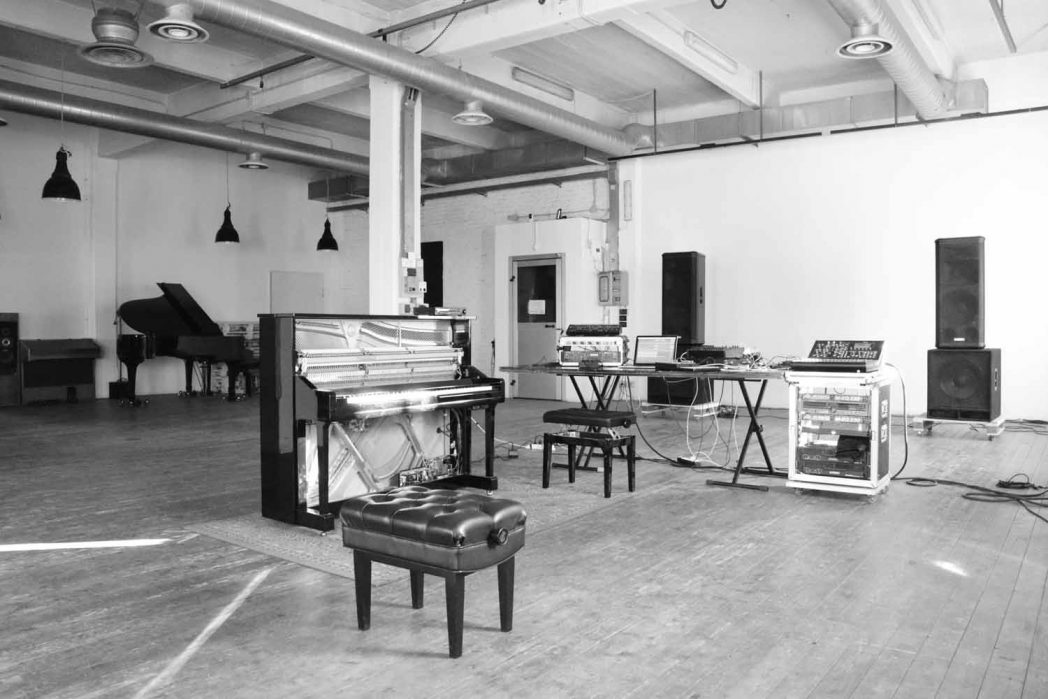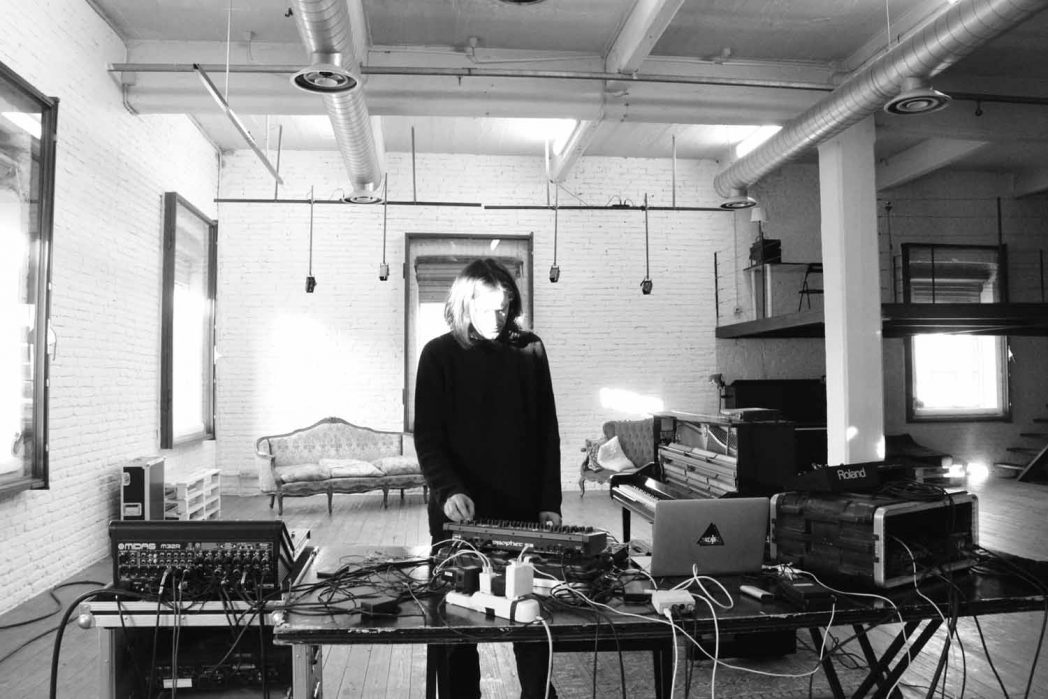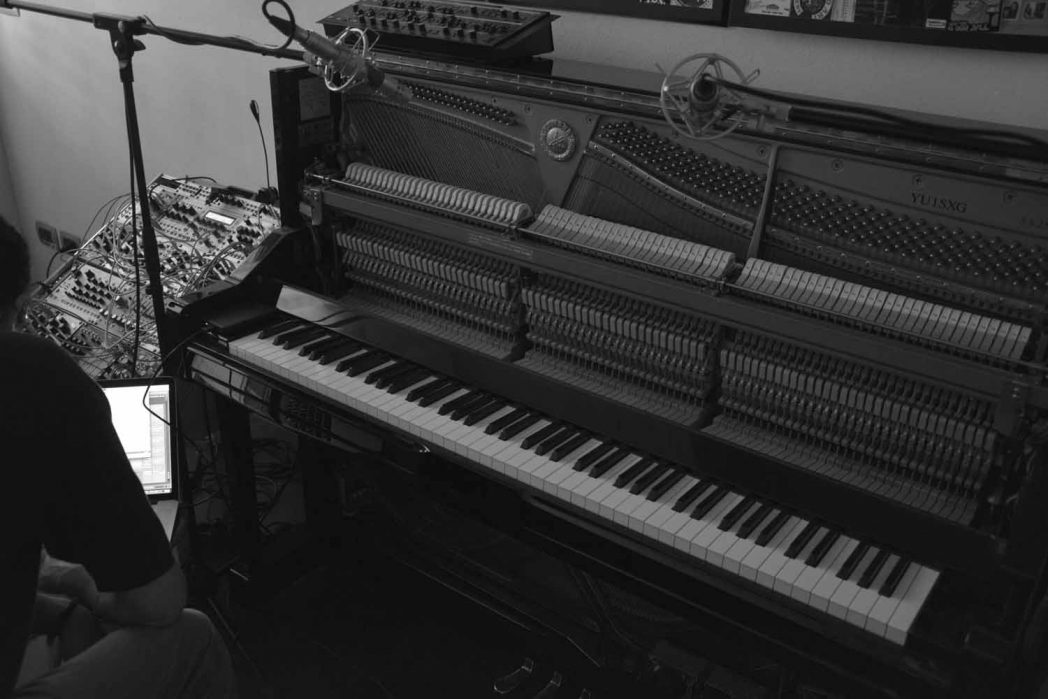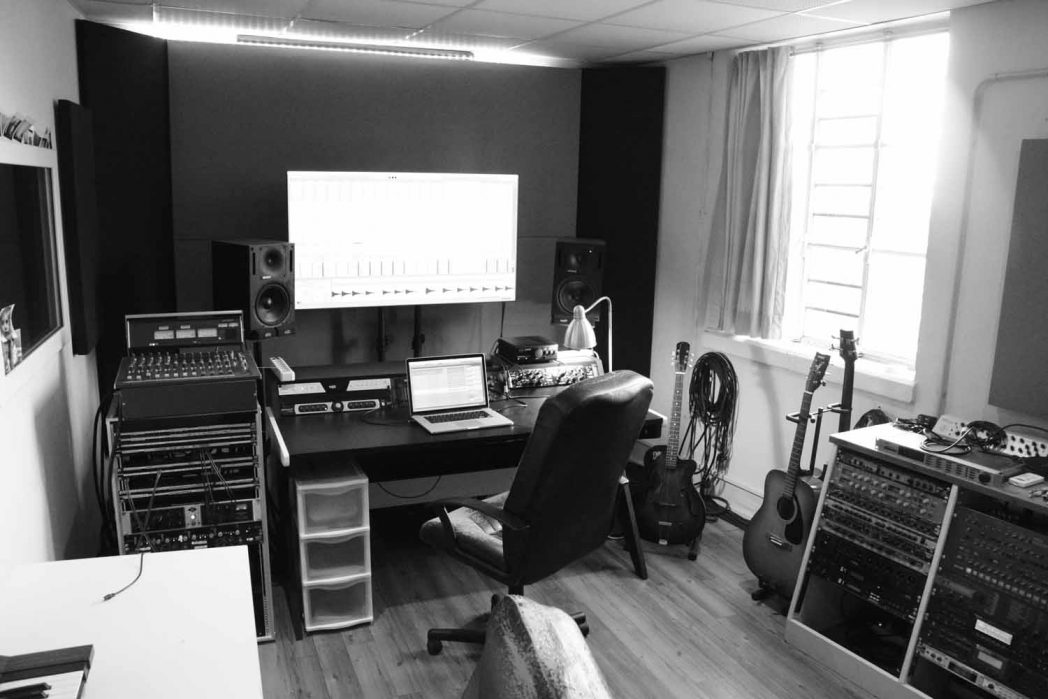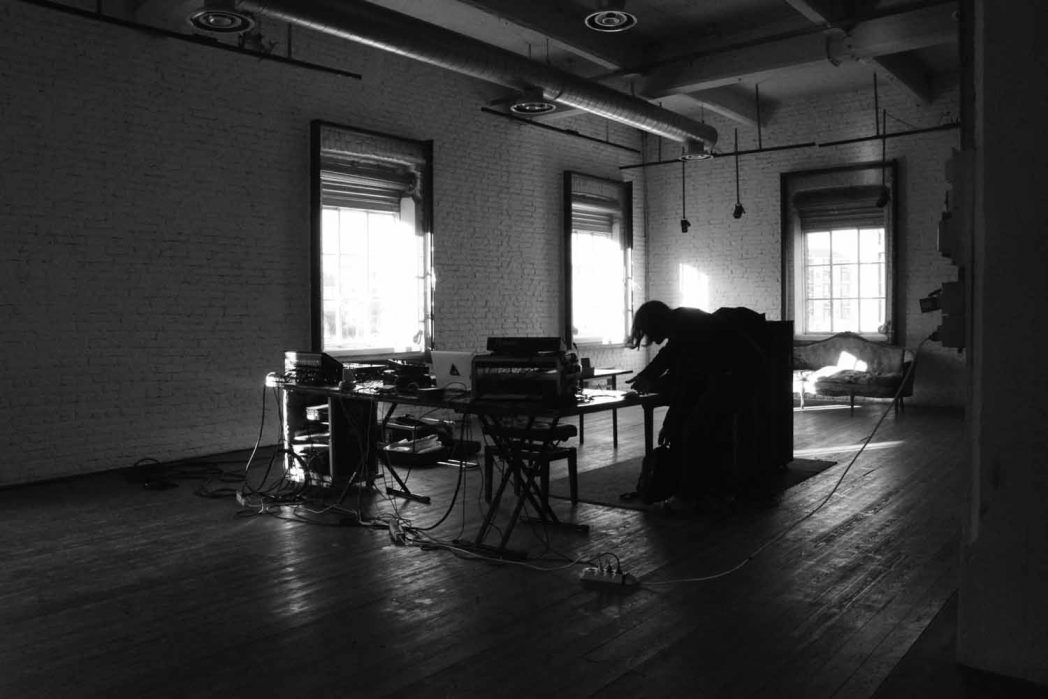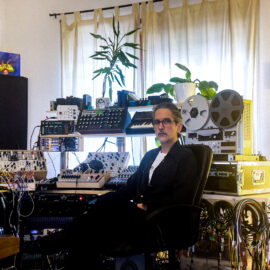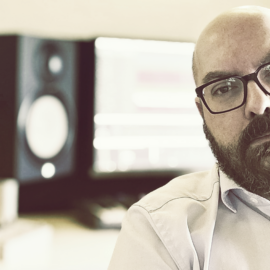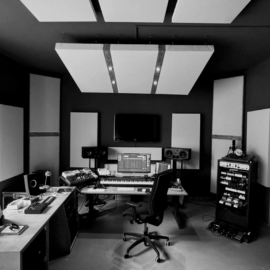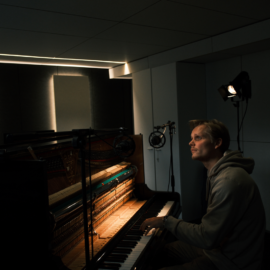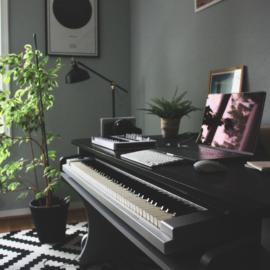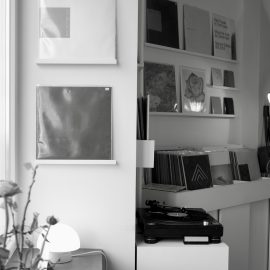Let’s start at the very beginning. Can you tell us how you got involved in composing, and what was your very first piece of gear?
Everything started at the beginning of high school. I started to play the guitar and to sing in some bands. At home from the very beginning, instead of learning to play songs properly, I used to spend my time recording ideas on a double-deck cassette overdubbing all the parts, recording guitar and wood sticks on pillows with headphones reversed. One day a friend lent me a general MIDI sequencer and generator, and I was blown away about the possibility of working on 16 different tracks simultaneously. The week after I bought my first workstation, a Roland XP 50, my first multi Fx, A sony Hr-Mp5, and my first 4 track recorder Fostex. The next steps were two samplers, an AKAI MPC 2000, an Emu ESI 4000, and a Lexicon Mpx.
How many different studio iterations have you gone through, and what does your final setup look like right now?
Several studios and studio setups passed me by and I still haven’t found the definitive one. At the moment I work basically in two different studios, moving from one to the other as needed. One is my personal home studio at home, where I keep all my favorite analog synthesizers of the moment, my modular system, and my Disklavier piano, all patched directly in my soundcard. The other one is the Superbudda studio, which I share with my two partners Gup Alcaro and Claudio Tortorici. Superbudda is a loft based studio, with 3 different spaces, a control room, a vocal booth, and two recording rooms, hardware racks and gears, analog and digital mixers, one grand piano, an upright piano, guitar, and bass amplifiers, a p.a. for rehearsals and all my other “not of the moment favorite” gear. Right now I’m thinking about moving my home studio outside my house, somewhere near Superbudda, with all my “favorite and not favorite” gear well patched and ready to use.
Tell us about your favourite piece of hardware.
I’m in the analog polyphonic synths and modular moment. For one or two years I’ve been really using the Roland MKS 80, together with the Dave Smith Prophet 8 rack version. New entries of the “lockdown” are the Black Corporation Deckard’s Dream and a trustworthy Yamaha DX 7 II-FD. On the modular side, my favorite gears for a while are Make Noise, Mutable Instruments, Noise Engineering, Verbos, and ALM Eurorack modules. I’m really enjoying the deep and evolving analog sound of vintage synthesizers and drum machines together with the richness of the presence of modular systems hybridized with the digital definition of FM synthesis and of the virtual Reaktor patches.
And what about the software that you use for production?
I work mainly with Ableton Live. I’ve been working for years with Logic Pro, but at one point I felt the urge to move to Ableton. After using Ableton only for live performances, I started using it in rewire with Logic Pro in production, cause I wanted to use some tools I had experienced live, and after a while, I discovered myself using much more Ableton than Logic, so I decided to move.
Is there a particular piece of gear that you’re just dying to get your hands on and do you think one day you’ll have it?
Every instrument, everything that produces sounds is a potential new gear I would like to put my hands on. Every time I use something that produces good sounds I would like to own it, that is why I don’t like to borrow instruments from friends because it’s really hard for me to know that I will not be able to use it later. That’s also why it’s very hard for me to sell my instrument to buy a new one, I already know that there is always a new time to dig and rediscover an old instrument with totally new ears.
Can you please share some aspects of sound design in your work?
I enjoy working with analog subtractive synthesizers, hardware FM digital synthesizers, and samplers. I also work a lot on the computer with additive synthesizers, Granular synthesis, FFT spectral filters, spectral-domain signal transformation processes, and most of all resonant filters applied on samples and field recording.
Any particular new techniques that you tried out for your new album?
Every time I start a new project I set up a new creative process. What I try to do is to define a new productive system that evolves working with it. Ableton is very friendly in doing this thanks to its Max MSP implementation. For the Diistemi album, I tried to work basically on a single track. What I had in mind was to create a single polyphonic crooked rhythmic sequence able to feed all my instruments via MIDI with different MIDI note mapping depending on the sound I was driving. I tried to get away from the traditional multi-part scoring, from the idea of having different tracks with different instruments, different melodic lines, different time divisions, and different patterns and concentrate on a single sequence to actuate all my gear, in order to create the feeling of a single sound event morphing and evolving, a cohesive and complex sound “animal” pulsating. To do that I worked a lot on the MIDI automation of each sound generator for all the lengths of the tracks in order to obtain an organic and evolving sound.
What does your live setup look like, and what do you bring with you when you travel for an extensive tour?
They change a lot depending on the project I’m bringing live. With the Spime.im a/v project, we use two Remidi wearable controllers applied on a laptop, to play and control audio Reaktor patches, samplers, and Resolume Arena video tools. With the Tomat Petrella project, I bring generally one case of my modular system with two oscillators and a grain sampler, my Dave Smith Prophet 8 Rack, together with some MIDI controllers and a Tc Helicon Voice Live II to harmonize Gianluca’s trombone in real-time. The setup of my new Diistemi album it’s composed of three analog synthesizers (Roland Mks 80 / Dave Smith Prophet 8 / Elektron Analog 4), a laptop, and some MIDI controllers. Even when I travel far I try to bring my hardware but in cases I can’t, I try to clone my hardware gear with virtual synth software. But it’s very difficult.
What is the most important environmental aspect of your current workspace and what would be a particular element that you would improve on?
Producing music is a very thin line, a subtle balance, which needs for me the feeling of finding myself in the right place at the right time. The good thing about working at a home studio is the opportunity to produce when you need and feel it. The very good thing about working in Superbudda studio is the big room together with the logically well-patched system of all the instruments. There you can produce, rehearse, record, and experiment with the feeling of freedom and the good energy of a big and light open space well patched. What I would like to improve in my next step studio setup, is the conjunction between Superbudda and my home studio.
– What can you tell us about your overall process of composition? How are the ideas born, where do they mature, and when do they finally see the light?
Lots of my music comes from my eyes together with the creation of a process system. I’ve always imagined the music as shapes, as evolving creatures, symmetries, and color spots. Basically, when I hear music I see images, not concrete images but shapes like the one you see before falling asleep when you lie in your bed. Combining images in my head with a process I think will work to reach them, I mainly obtain different pictures from the one I focused on in my head and so most of the work is to get close to them or to be caught and driven by cool and unexpected totally different images. Another very important element in my creative process is the body feeling, the way sounds hit my body needs to be close to the way they hit my brain.
After the piece is complete, how do you audition the results? What are your reactions to hearing your music in a different context, setting, or a sound system?
I love to produce music, but I definitely don’t like to mix and master it. Don’t get me wrong, I think both are cool processes, very interesting, and very addictive, but after producing an album I’m mainly OK with it. Most of the time, if I like how a track plays, it is not the proper way that track should play to be ok for all kinds of speakers or devices. Trying to reach physical effects on the body, sometimes, some frequencies are driven more than they should. So a good mixing and a good mastering engineer can help you to obtain the result you wanted, bringing your track to a higher and more compatible listening level. To do that, things in the sound shape need to be changed and controlled compared to your pre-mix. After the mixing and the mastering session your tracks always sound differently and even if they sound much better you need time to regain confidence with them. So every time you hear your music it’s very complex. That’s why I give some time to my tracks after they are finished before listening to them back.
Do you ever procrastinate? If so, what do you usually find yourself doing during those times?
How can’t you procrastinate? I’m always trying not to do it but it’s unavoidable. Producing, I try to transform every playback to a propositive and active working moment so that every scrolling of the track is an opportunity to make changes and improvements, even different from planned action, in the very right moment I hear the urge to do it. On the other hand, I force myself to record every experiment that tickles me, even if when I’m playing inattentive or even if I don’t have the right time to do it properly, I fix that idea so that I can come back to it later. But the only way for me not to procrastinate is deadlines, otherwise, I could go on forever making changes or losing time trying different solutions.
What gets you inspired?
Errors, unexpected things, and truth are the things that most inspire me, things that raise questions without clear answers. Working with modular you become used to experimenting with the uncertain, both in composition and in sound sculpture. It’s easy to do the wrong patching, or simply not to obtain what you have planned, so you learn to deal with the unexpected most of the time. It’s good to develop a healthy relationship with it and to keep the excitement and curiosity in discovering something new, with every kind of process and instrument.
And finally, what are your thoughts on the state of “electronic music” today?
I’ve always been amazed by electronic music since I was a child. Thanks to my father listening and my chronological age I’ve always been exposed to synthesizer music since I was a kid. A part of me can’t behave without synthetic sounds, it’s in my DNA and so it’s difficult for me to be objective. I consider electronic music as the most expressive way to represent and describe the worlds we live in and image worlds we will live in. Due to technology enhancement, synthesis is becoming more accurate and expressive, closer to the expression power of acoustic instruments and sound design is becoming more and more challenging every day. Continuous modulations of all the synthesis parameters can create some incredible and never heard wide sounds, can cover an incredible spectrum of frequencies with such a big presence, dynamics, and precision with an incredible alive feeling.
